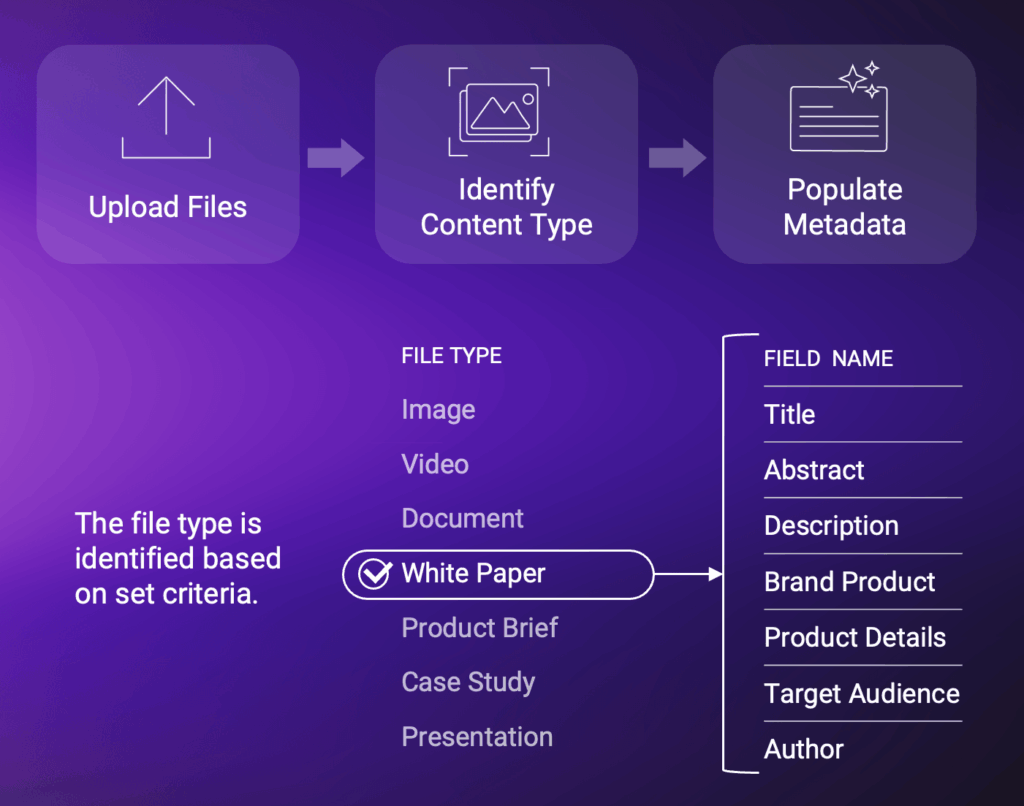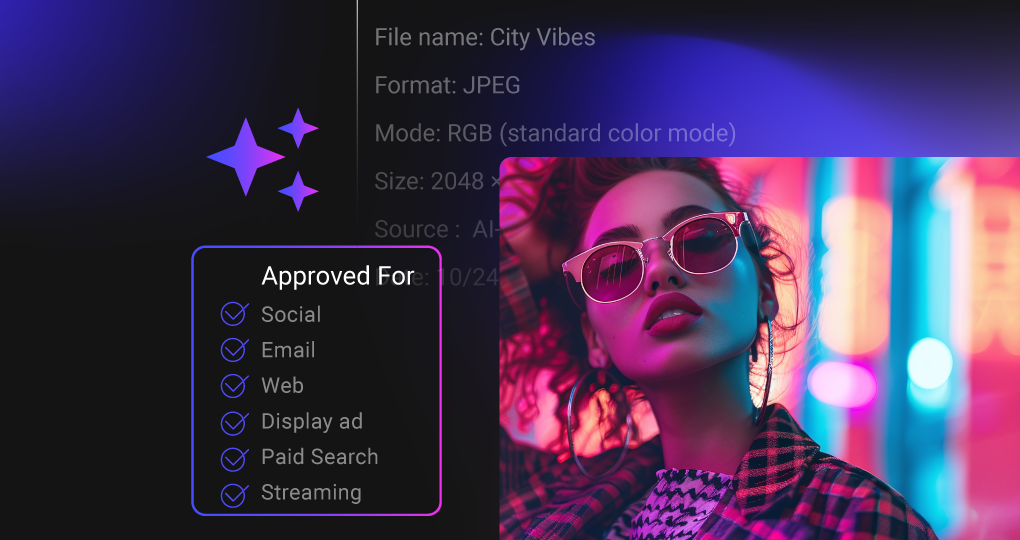Tagging digital assets manually isn’t just time-consuming—it’s inconsistent, subjective, and hard to scale. That’s where predictive metadata comes in.
Predictive metadata uses artificial intelligence (AI) and machine learning to automatically apply relevant metadata to your digital assets based on what they are, how they’re used, and how similar content has performed.
TL;DR
Predictive metadata uses AI and machine learning to automatically tag and enrich digital assets in a DAM system. Instead of relying on manual input, it suggests metadata like keywords, usage rights, content type, and performance indicators based on context and past behavior. This makes assets easier to find, streamlines workflows, and helps large teams scale content operations more efficiently.
What makes metadata “predictive”?
Instead of relying solely on manual input, predictive metadata leverages models trained on existing content, usage behavior, and contextual patterns. These models can suggest or apply:
- Descriptive keywords
- Usage rights or licensing flags
- Campaign or content type classifications
- Engagement or performance tags (e.g., “high-performing,” “social-ready”)
In other words, the system doesn’t just describe what an asset is—it predicts how it might be used or where it belongs in your content ecosystem.
Why it matters
If your teams are managing thousands (or millions) of assets, manual tagging becomes a bottleneck. Predictive metadata helps by:
- Speeding up asset discoverability
- Improving tag consistency across teams and regions
- Reducing manual workload for creatives and marketers
- Enabling smarter, automated workflows (e.g., auto-routing based on asset type)
Here’s what it looks like in practice
Imagine uploading a batch of campaign photos. Instead of tagging each one by hand, the DAM automatically applies location metadata, campaign name, audience targeting, usage flags, and even recommends whether it’s web-ready or needs localization review.
Or consider an asset that’s been used repeatedly in top-performing campaigns—the system can tag it as “high engagement,” making it easier for other teams to surface and reuse it.
Predictive Metadata in Action

When to consider predictive metadata
If your organization is:
- Scaling content across multiple brands or markets
- Struggling with inconsistent or incomplete metadata
- Wasting time manually tagging assets
- Trying to improve asset reuse and reduce duplication
…then predictive metadata could be a game changer.
Final Take
Predictive metadata brings automation and intelligence to one of the most tedious parts of asset management. It helps teams move faster, stay consistent, and get more value out of the content they already have.
For DAM users, it’s not just a nice-to-have, it’s becoming essential to keep pace with the volume and velocity of modern content operations.
FAQ
What is predictive metadata in a DAM system?
Predictive metadata uses AI and machine learning to automatically tag, classify, and enrich assets in a DAM based on content, context, and usage patterns.
How does predictive metadata help marketing and creative teams?
It reduces manual tagging, improves consistency, and speeds up asset discovery—helping teams work faster and reuse content more effectively.
Is predictive metadata accurate?
Yes, especially when trained on your organization’s existing content and metadata. The more data it has, the more accurate and context-aware it becomes.
Can predictive metadata support workflow automation?
Absolutely. It can trigger routing, approvals, or localization workflows based on content type, usage rights, or campaign tagging.
Do all DAM systems offer predictive metadata?
No. Predictive metadata is typically available in advanced or enterprise-level DAM platforms that include AI-powered features.



